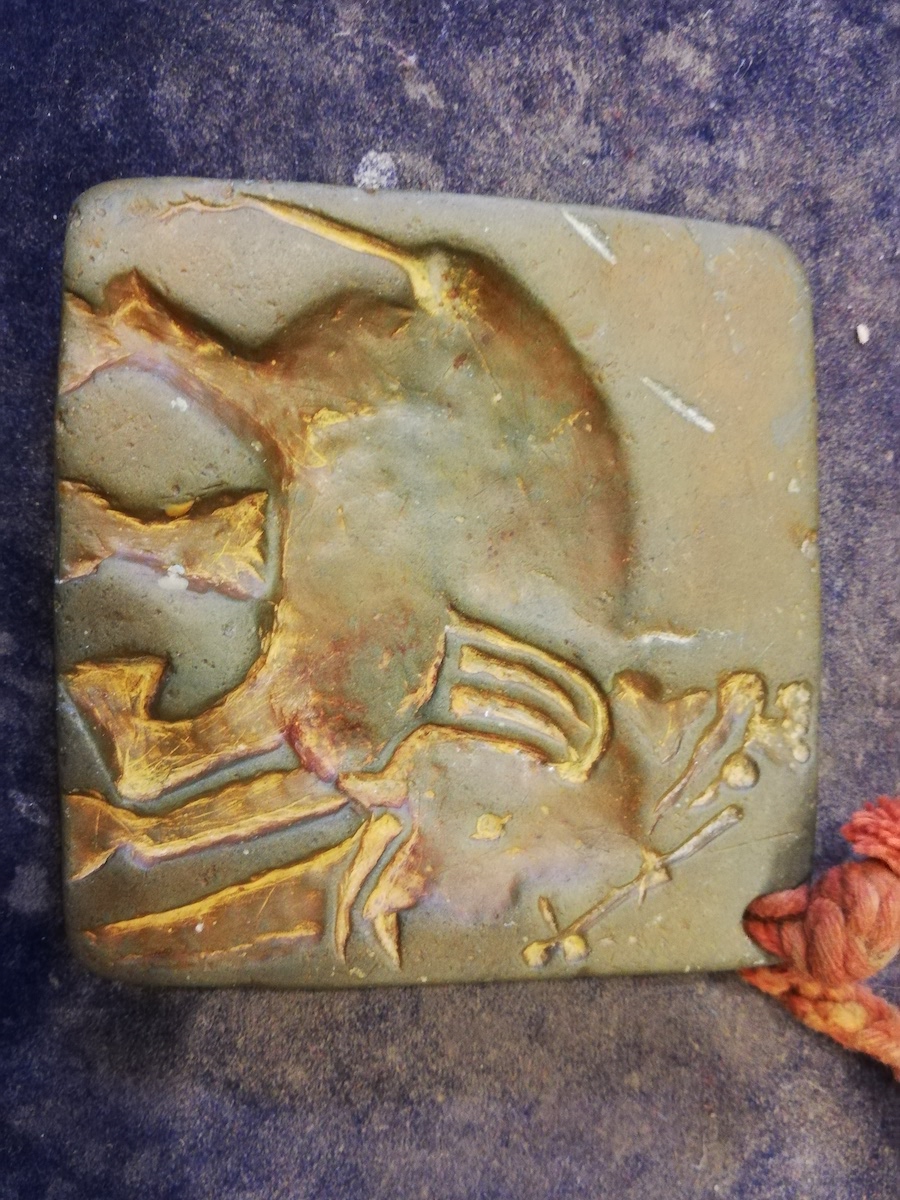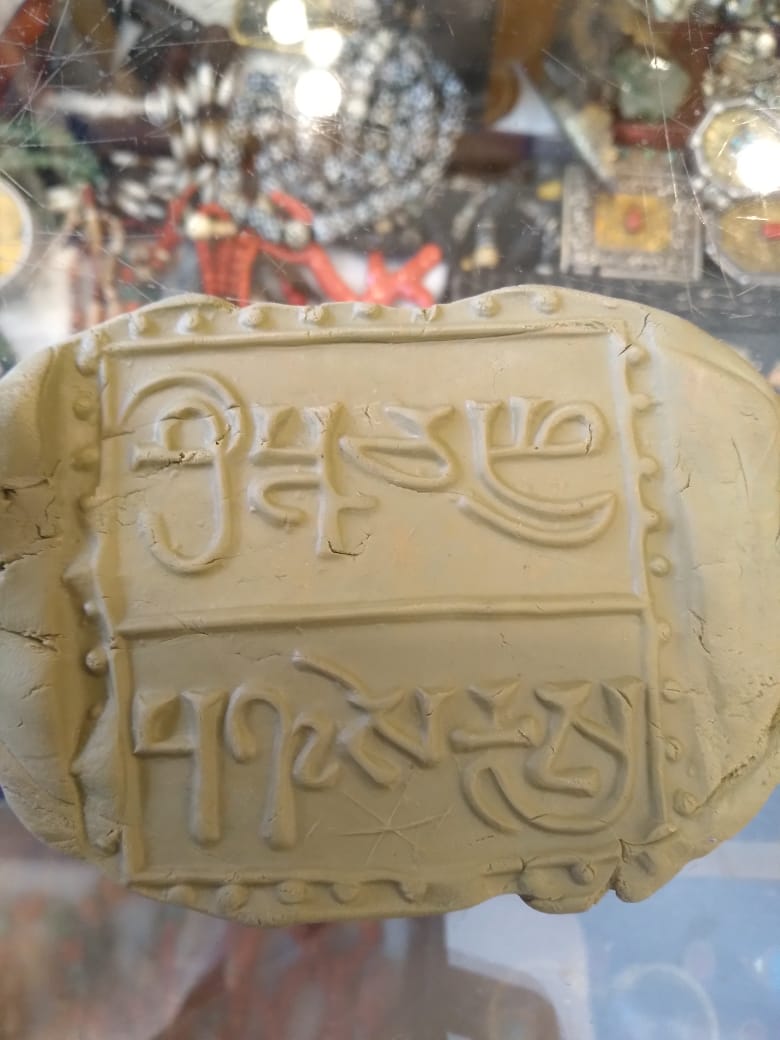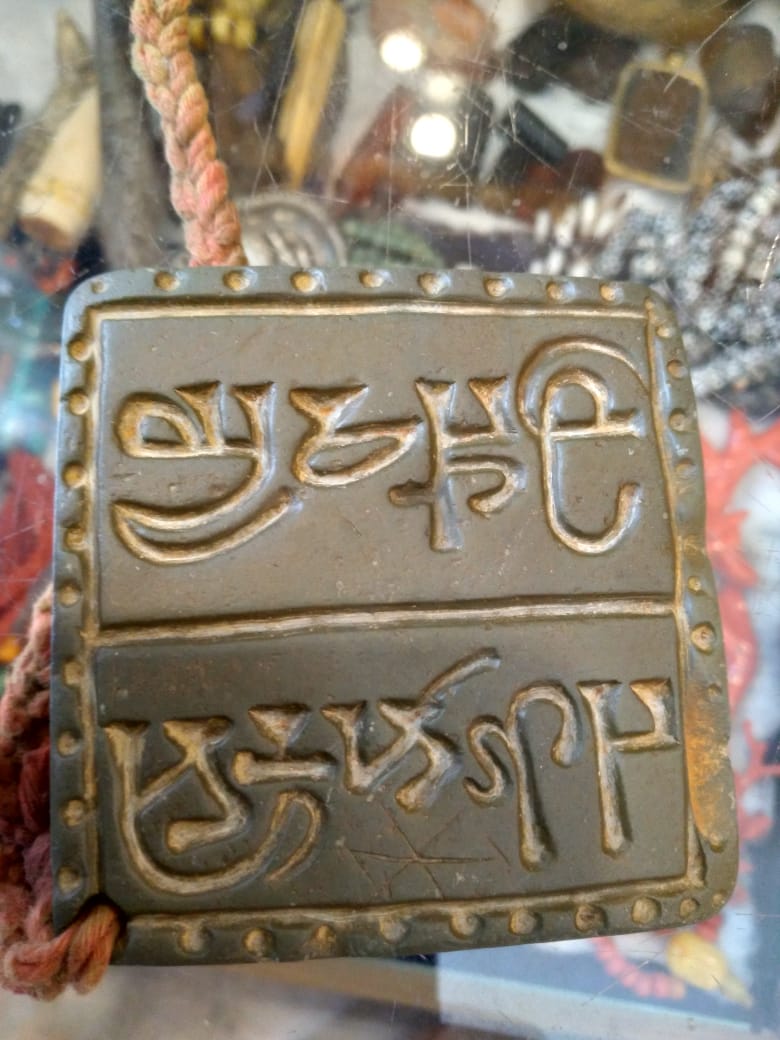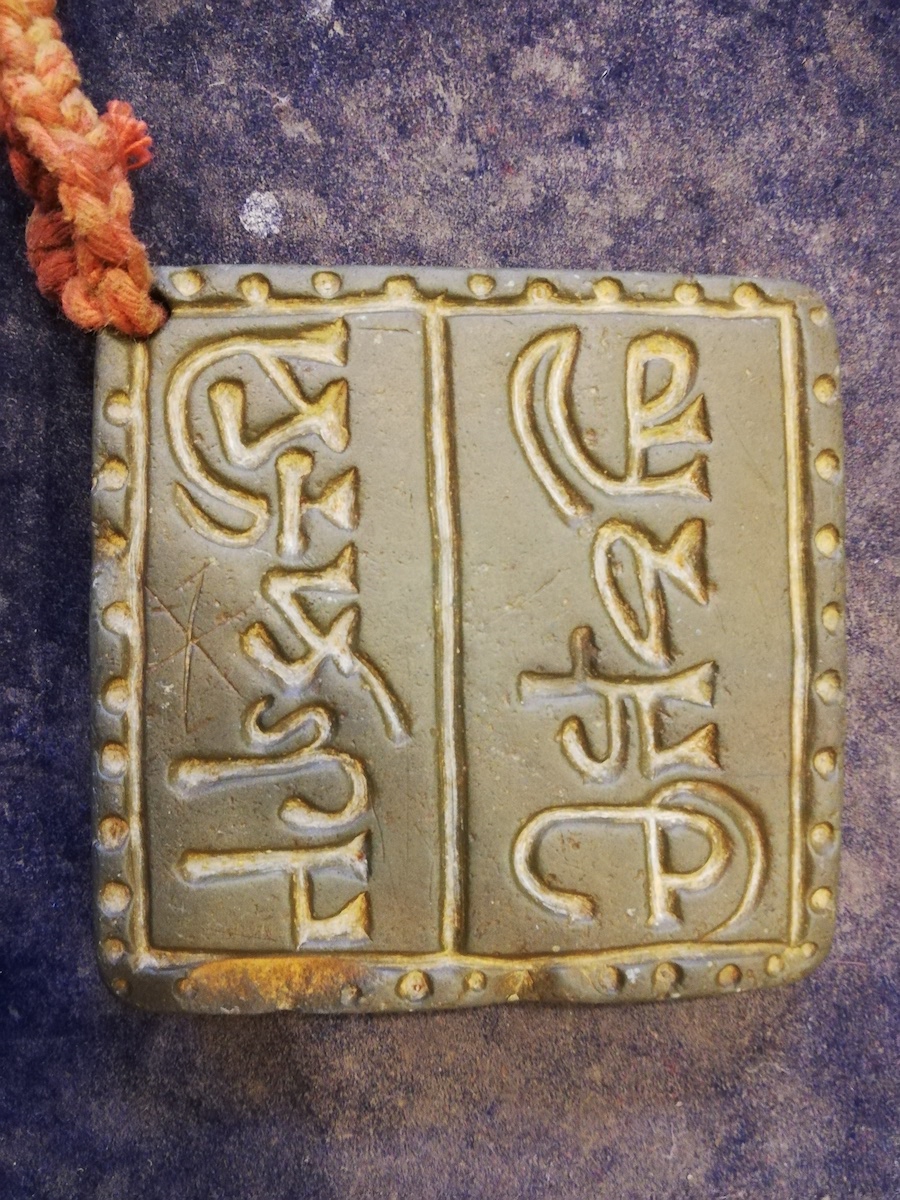Unusual Sarada inscription
« previous post | next post »
The following are photographs of a supposedly Śāradā / Sarada / Sharada inscription, sent to me by an anonymous correspondent:
First of all, here is what I know about the physical properties and other pertinent details of the inscription:
material — green stone
size — roughly 5 inches by 5 inches
reported provenance — Kashmir
status — extant mineral encrustations on surface indicative of an object that was recovered from the ground and cleaned
reverse side — quite deeply carved elephant
The anonymous correspondent who sent the photographs to me asked the following three questions:
I take it that the inscription is the proper name of an individual?
Strange the misspelling of a common word acarya on this rather elaborate object?
What is its function — is this a priestly or military seal?
He also made the following comments:
Some letters like ca and sya seem to place this inscription in the Middle Brahmi group but others are very highly elaborated and not typical of the period, and I am unable to place them. This is one of the strangest Brahmic scripts I have ever come across, but that may mean very little as this is not my area of expertise.
John Mock makes the following observations:
I'm not sure it is Sarada. For example, ས་ is a Tibetan character for "sa", not a Sarada character. But the inscription is not Tibetan.
The top line is "mirror writing" in the first image, but appears correct in the second image, in which the bottom line is mirror.
Harry Falk transliterates the inscription as follows:
śrī ācayya
puñasenasya
Harry further notes:
The yya (wrong for ryya) has been incised unmirrored, the rest is ok.
7th-9th cent., my guess.
My Sanskritization of the inscription would be:
Śrī ācārya श्री आचार्य ("honored / auspicious religious / spiritual teacher / guide")
puṇyasenāsya पुण्यसेनास्य ("virtuous / pure / holy / meritorious military / army" + gen., hence, "of the holy military")
All together this might be rendered as "auspicious teacher of the holy army".
(Sanskritists, please correct me if I've made any errors!)
From Jason Neelis:
The reading seems fine to me, with a genitive singular ending in –sya indicating that whatever was stamped with this seal (if that’s what it is) belongs to the teacher named Puṇyasena. This is an excellent name.
From Varun Khanna:
The -sya affix indicates the masculine genitive singular. So, given that these are all part of one compound word, here we could translate it as something like "of/belonging to the venerable teacher Punyasena", where the word Punyasena as a name can mean "one possessed of an army of virtue(s)" or something similar.
Punyasenasya occurs in the 11th c. Kathāsaritsāgara (Ocean of the Streams of Stories) by the Shaivite Somadeva. (I love this book because it is so full of interesting stories, some of which I have attempted to identify in Chinese tale collections.)
Selected readings
- "Inscription decipherment with digital image enhancement" (12/1/20)
- "Writing Sinitic languages with phonetic scripts" (5/20/16)
- "Unknown Language #12" (7/18/20)
- "Devangari" (10/26/20)
[Thanks to Diana Shuheng Zhang]
Addendum
Higher resolution of the script:
The elephant side of the seal appears to have been heavily used:




Philip Taylor said,
August 6, 2021 @ 4:37 am
I know nothing about Śāradā / Sarada / Sharada inscriptions (supposed or otherwise) but the images are fascinating in their own right. The first clearly appears to be embossed rather than inscribed, but as soon as I scrolled down to the second, the fact that it was an inscription became clear. I read on, returned to the second image, and it too then looked as if it were embossed. Do others see these visual illusions ?
David Marjanović said,
August 6, 2021 @ 5:15 am
The first is a cast of the second, made by pressing clay or plasticine or something onto the real thing, which is the second.
Obviously, if there's a strange mix of features in it that are otherwise found separately, and if the provenance is unclear (Kashmir is rather large, even without Jammu), the possibility should be raised that it's a fake. But of course I'm not qualified to judge that.
Victor Mair said,
August 6, 2021 @ 7:01 am
A trusted iconographer of Asian art tells me that, judging from the picture of the elephant, it looks early (7th / 8th c. AD).
Harry Falk said,
August 6, 2021 @ 9:40 am
Victor wrote:
All together this might be rendered as "auspicious teacher of the holy army".
I would rather say “(Seal of) the Venerable teacher Punyasena”, where punyasena by itself expresses somthing like: “he whose religious credit works form him as his army”, in defence or verbal attack.
Scott P. said,
August 6, 2021 @ 12:41 pm
So we have no context for the inscription. This is the sort of thing that drives us archaeologists crazy. Can we be sure it's not a fake?
Y said,
August 6, 2021 @ 1:08 pm
What is the significance of the faint asterisk-like mark scratched beneath the middle of the second line?
Harry Falk said,
August 6, 2021 @ 1:49 pm
Certainly not a fake.
faint scratch: significance nil, decoration.
Context: Buddhist, – is this not enough?
Scott P. said,
August 8, 2021 @ 8:42 pm
Certainly not a fake.
How can you make that pronouncement?
Context: Buddhist, – is this not enough?
Absolutely not. Where was it found? In a domestic context, grave, votive deposit, or other location? What kind of soil was it found in? What was the stratigraphic context? What objects were in the same stratum? What is the chronological sequence of the site? What paleobotanical evidence is associated with this stratum? The questions are myriad.